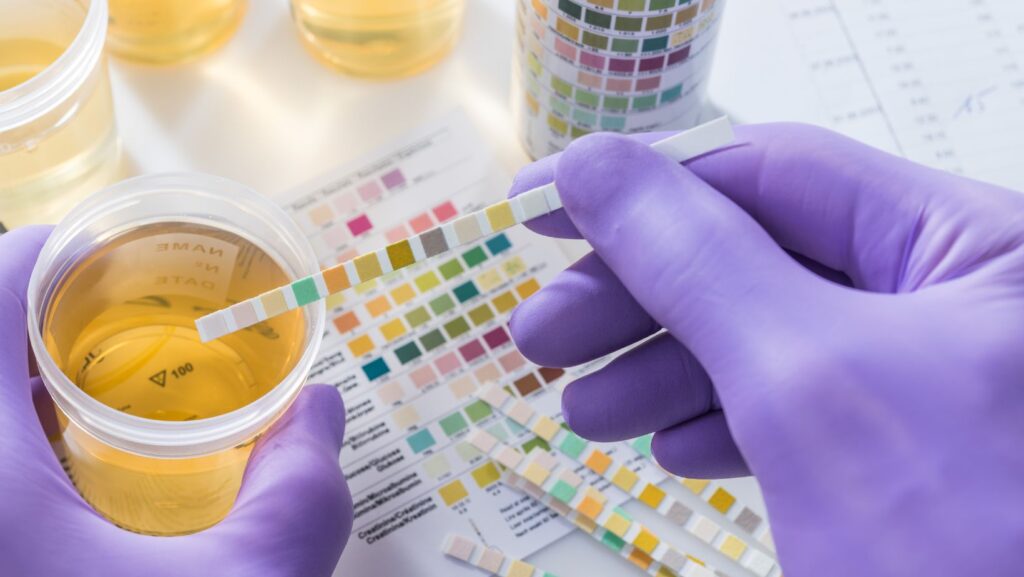
Performing a urine drug test can seem daunting, but the process is straightforward and typically quick. First, you’ll need an appropriate urine drug testing kit. Start by ensuring you have a clean specimen cup for collecting the urine sample. Often, these are provided as part of affordable urine drug testing kits.
After collecting the sample, it’s essential to follow the instructions included in your kit. This often involves using test strips or similar tools to check for the presence of specific substances. For workplace scenarios, 99% accurate urine drug test kits are commonly used as they provide precise results quickly.
The final step is analysing the results according to the guidance provided. This can include comparing the test strip colours to a reference chart to identify any positive results. Properly perform these steps to ensure reliable outcomes, whether for personal, medical, or workplace purposes.
Preparing for the Urine Drug Test
Proper preparation ensures accurate and reliable results when performing a urine drug test. Taking the right steps ahead of time will help you navigate the process smoothly.
Understanding the Test Purpose
Knowing why the test is being conducted is essential. Urine drug tests can detect both illegal and prescription drugs. Typically, they are used by employers, sports officials, or medical professionals. Ensure you know what substances are being tested for and the timeframe they cover. For instance, some tests detect drug use from several days to a few weeks before the test. This knowledge helps you understand the test’s context and how to prepare accordingly. Awareness about the substances being tested can also guide you on whether any of your current prescriptions might need to be disclosed before the test.
Gathering Necessary Materials
Collect all materials you will need for the test. This includes a clean, sealable container to collect the urine sample. You might also need identification documents, as some testing facilities require proof of identity. Wear loose clothing to make the process easier and more comfortable. Bring any required paperwork or doctor’s notes, especially if you are on medication that could affect the test results. Make sure to drink a normal amount of fluids before the test, unless instructed otherwise. Over-hydrating can dilute the urine and potentially affect the results. Being prepared with the right materials can also speed up the process, making the experience less stressful.
Ensuring Privacy and Integrity
Testing environments are designed to protect your privacy and ensure the integrity of the sample. You may be asked to leave personal belongings outside the testing area and may have to wear a hospital gown or similar clothing.
Some facilities have steps in place to prevent tampering with the sample, like bluing the toilet water or turning off the water supply. Follow all instructions given by the testing personnel to ensure that the sample is collected correctly. If you have any concerns about privacy or the testing procedure, ask before the test begins. This will help you understand the process better and reduce any anxiety you might have.
Conducting the Test
Performing a urine drug test involves several key steps, including collecting the sample, preventing tampering, and ensuring proper storage and transport of the sample.
Collecting the Sample
To begin, ensure the individual has valid identification. Explain the procedure, making sure they understand the steps. Direct them to a private restroom equipped with a clean collection cup.
Ask them to provide a midstream urine sample. This means they should start urinating, then collect the sample after the first few seconds. Label the sample cup with the individual’s details, including name and date.
Key Points:
- Provide clear instructions
- Use a midstream sample
- Label the sample immediately
Preventing Tampering and Adulteration
To ensure the integrity of the sample, certain measures must be taken. Observe the individual from a distance to prevent them from adding anything to the sample.
You can use temperature strips to check that the sample is body temperature soon after collection. Lock the restroom or limit access to running water and cleaning supplies to avoid tampering.
Important Measures:
- Supervise without invading privacy
- Use temperature strips
- Lock or restrict restroom facilities
Storing and Transporting the Sample
Once the sample is collected, it must be stored and transported correctly. Place the labelled sample in a secure, sealed container. If the sample needs to be sent to a laboratory, refrigerate it if it will not be transported immediately.

Transport the sample as quickly as possible to the testing facility. Follow any specific guidelines the testing facility provides regarding temperature and handling.
Storage and Transport Tips:
- Secure and seal the container
- Refrigerate if necessary
- Transport promptly and follow guidelines
Conclusion
Performing a urine drug test is straightforward and involves a few key steps. You begin by collecting a urine sample, usually in a bathroom set up specifically for this purpose.
Next, the sample is initially tested using immunoassay techniques. These techniques use antibodies to identify specific drugs or their metabolites. This initial screening is quick but may produce false positives.
In cases of positive tests, confirmatory testing is conducted. This often involves more sophisticated methods like gas chromatography-mass spectrometry (GC-MS), which are highly accurate.
The results from confirmatory tests are typically reliable and used for final evaluation. These processes ensure that the test outcomes are as accurate as possible. By following these steps closely, you can effectively perform a urine drug test.












